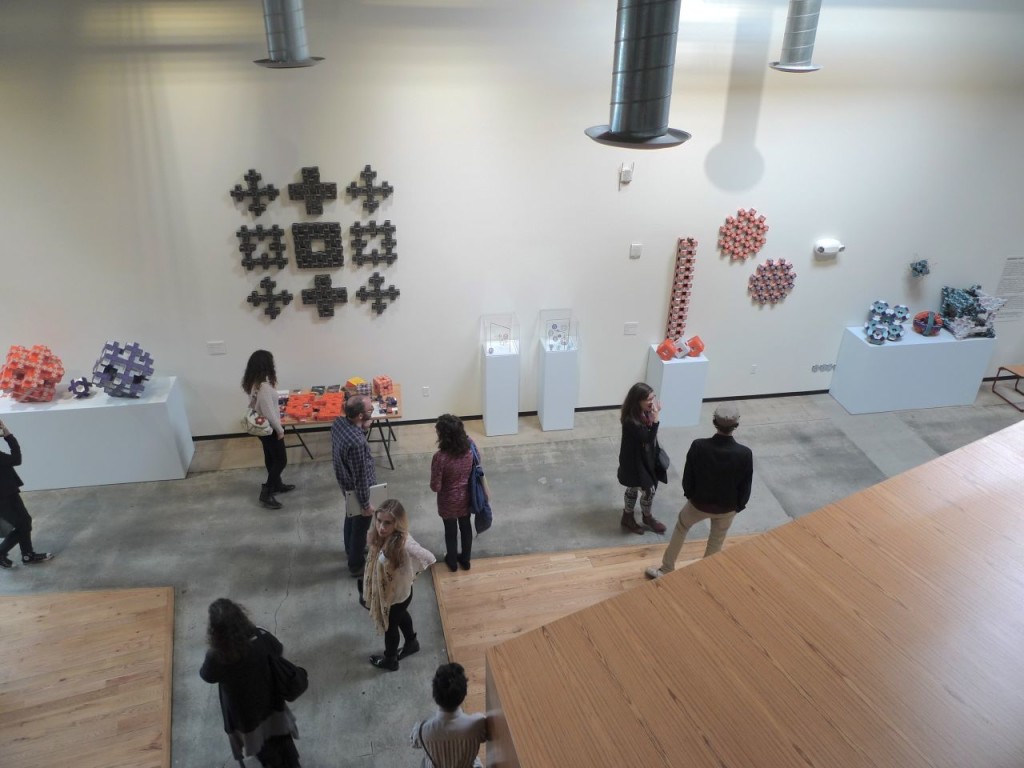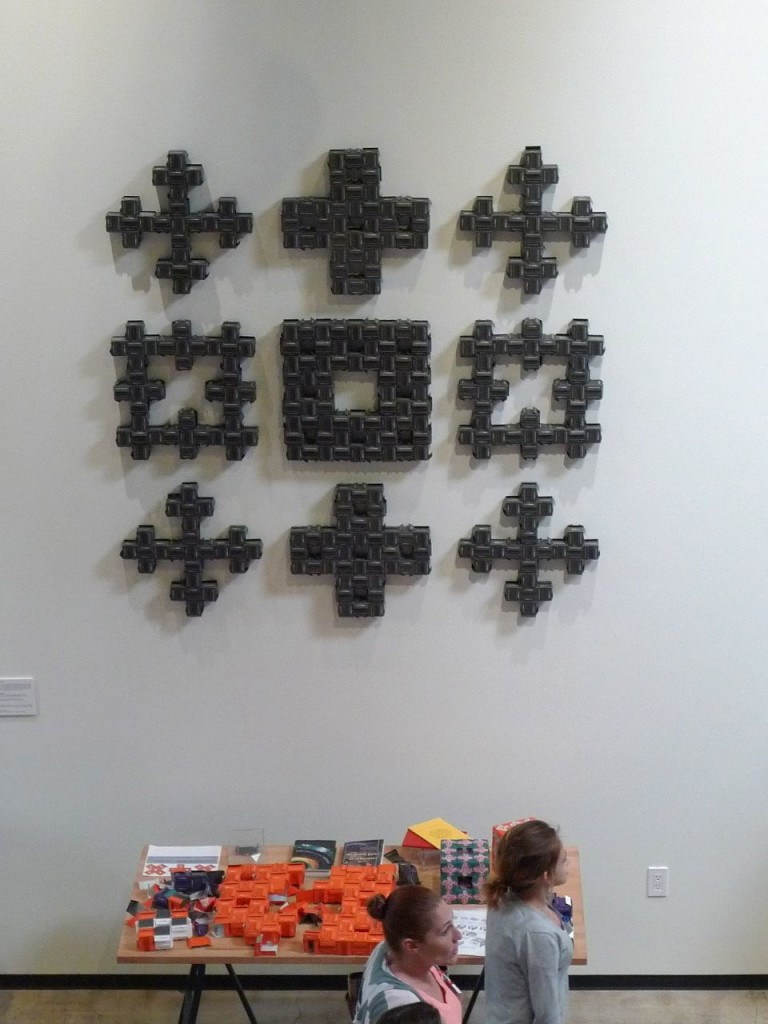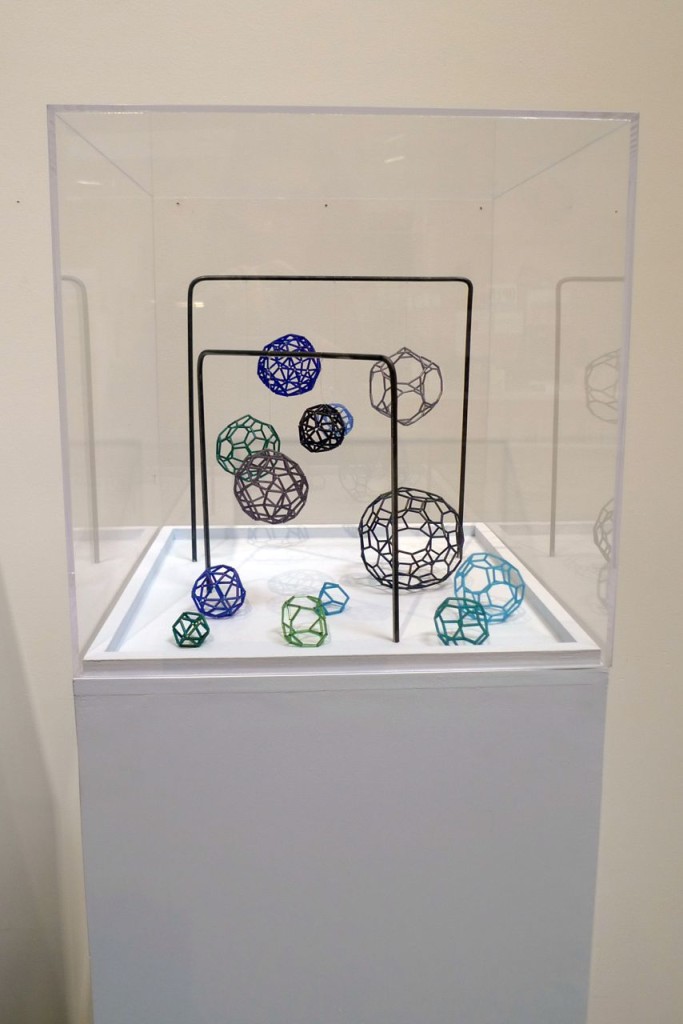On February 10, 2014, the IFF and friends made a field trip to the Google office in Venice, CA, to visit our exhibition there. Titled “Making Space”, the exhibit showcased works developed at the IFF during our major Making Space mathematics and aesthetics project in 2013. Included in the Google show were large-scale sculptures of business card origami, tiny beaded Platonic solids, geometric bamboo stick things, and other enigmatic spatial structures. The pieces looked terrific in the Google space and we thank program manager Max Maxwell for spearheading Google Venice’s innovative arts program. Works featured in the exhibition were by Jake Dotson, Jesse Dotson, Christina Simons, David Orozco, Kathryn Harris, Corrine Cascioppo and Margaret Wertheim. The business card origami sculptures on display built-on and extended original research by engineer Dr. Jeannine Mosely, a pioneer in the field of mathematical paper folding or origami sekkei. Seen below are photos of the elegant installation.
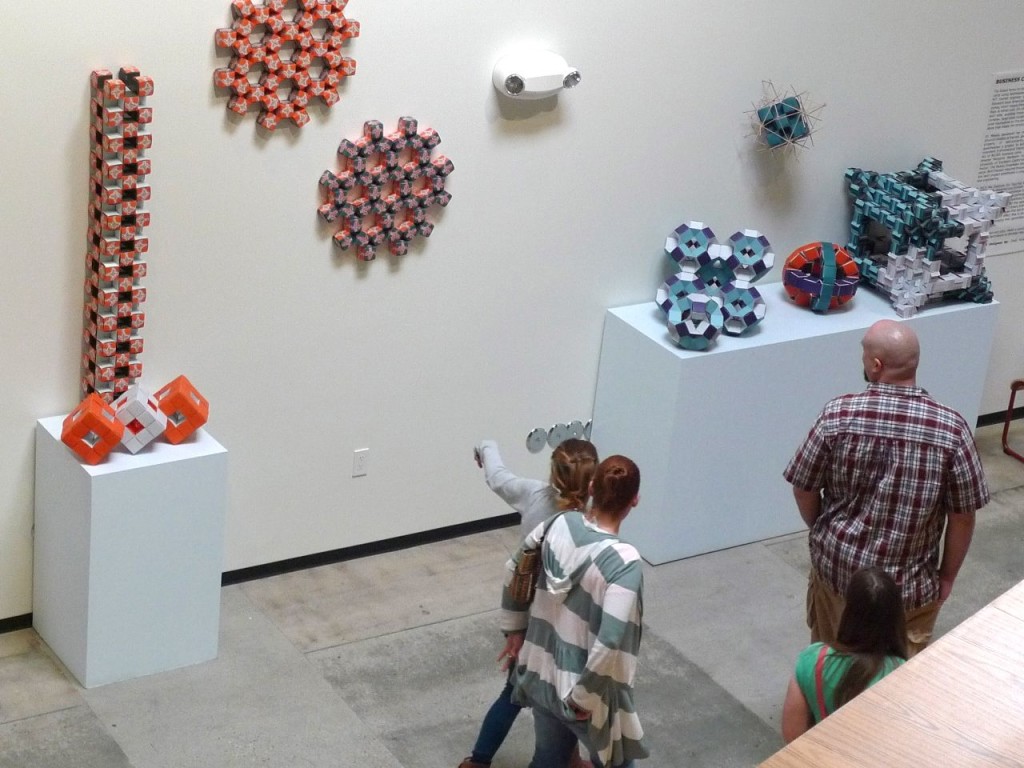
Vistors to the IFF’s Making Space exhibition at Google, Venice CA. At left is David Orozco’s lattice-like tower, and at far right is a cubic lattice by Jake Dotson.
During the course of the IFF’s Making Space project in 2013, visitors to our gallery were introduced to the techniques of business card origami pioneered by Dr. Jeannine Mosely in order to build material models of fractals. Using 60,000 specially designed, brilliantly colored cards, participants were invited to experiment and develop new structures of their own. It quickly became evident that some participants had a special knack for these techniques and a new taxonomy of business card “species” began to evolve. David Orozco developed an innovative method for constructing lattice-like towers; Jake Dotson started exploring folding techniques based on pyramidal rather than cubic geometries; Jesse Dotson (his younger brother) worked out how to make spherical forms resembling armillary spheres. Inspired by a structure on a geometry website Christina Simons developed a lovely module based on a truncation of the cube that can be fitted together in a crystalline space-filling lattice.
Dr. Mosely’s original techniques had been designed to create three-dimensional fractals, but the IFF’s Margaret Wertheim, encouraged people to also think about two-dimensional forms. Margaret and Christina completed a grid of the nine two-dimensional layers of a Level Two Mosely Snowflake fractal, highlighting the graphic internal anatomy of this self-similar structure. Other participants started to explore in 2D and Tracy Tynan surprised us with a rendition of a Peono space-filling curve. Jesse Dotson constructed a hexagonal tiling network that made excellent use of our “swirly” patterned cards, while Corrine Cascioppo made a model of the famous “infinity” knot, a mathematical form that has resonance in Tibetan Bhuddism.
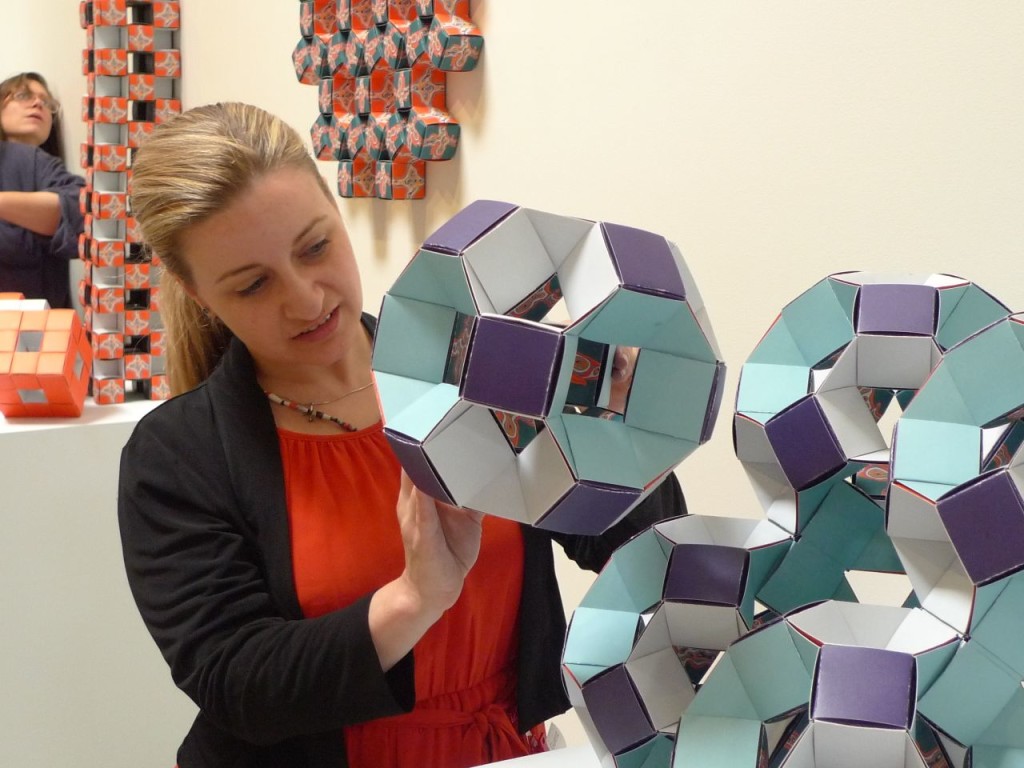
Christina Simons places another atomic module into her molecular origami structure. Each atomic unit here is a truncated cube so the balls fill space in a crystalline lattice.
Included in the Google exhibition also were two vitrines of small beaded mathematical structures made by San Diego artist Kathryn Harris. As part of the Making Space project in 2013 Kathryn conducted a workshop at the IFF showing us how to make Platonic solids from bugle beads and wire. For the Google show she constructed a complete set of the 5 perfectly regular Platonic solids and a set of the 13 semi-regular Archimedean solids. These tiny forms are a delightful invocation of geometric objects that have engaged philosophers and mathematicians attention for thousands of years. The Platonic solids – though named after Plato (who associated them with the five basic elements) – were known to neolithic peoples; the oldest objects that show us these forms are a series of stone balls whose surfaces are inscribed with the network structure of each solid. Found in Scotland, they date back more than 4000 years. Kathryn’s work carries forward this ancient lineage of math and material design.

Kathryn Harris’s eades representations of the 5 Platonic solids (left) and the 13 Archimedean solids (right).
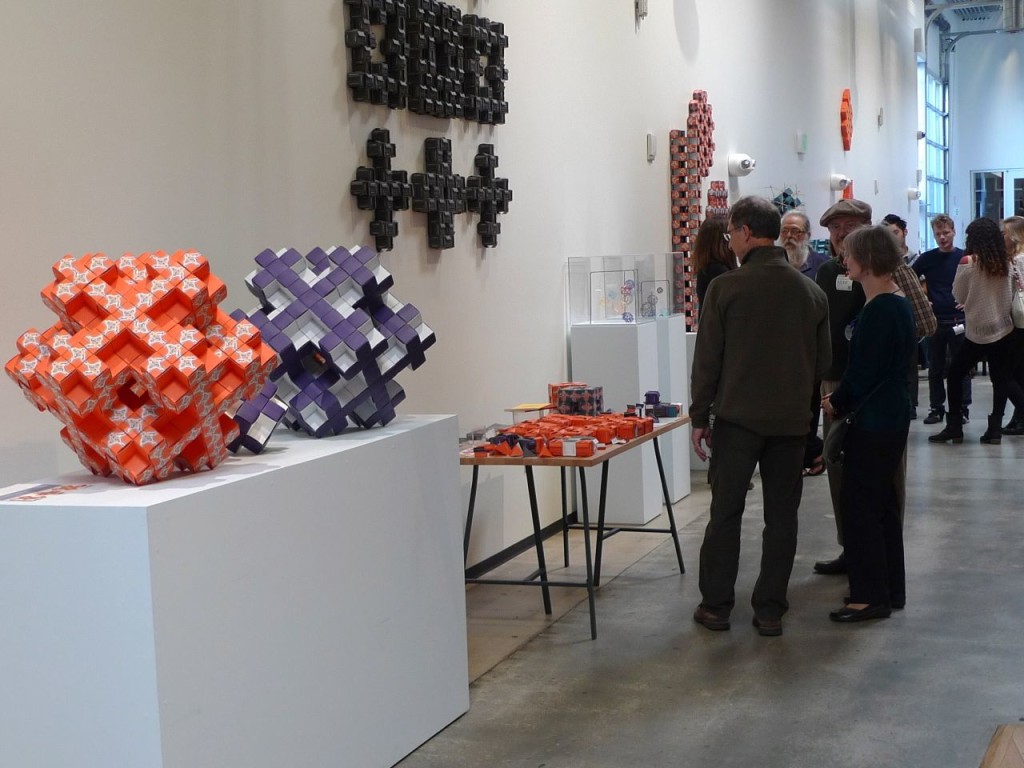
Making Space exhibition at Google. At left are two Level Two Mosely Snowflake Sponge fractals, folded by Christina Simons and Margaret Wertheim, from an original design by Dr. Jeannine Mosely. At right are some of the nine topographic layers which make up these three-dimensional structures. By revealing each layer, one gets a visceral, graphic sense of the fugue-like repetition of crosses and rings that make up these forms. Thes basic architectural motifs are repeated at every level of the fractal’s anatomy.
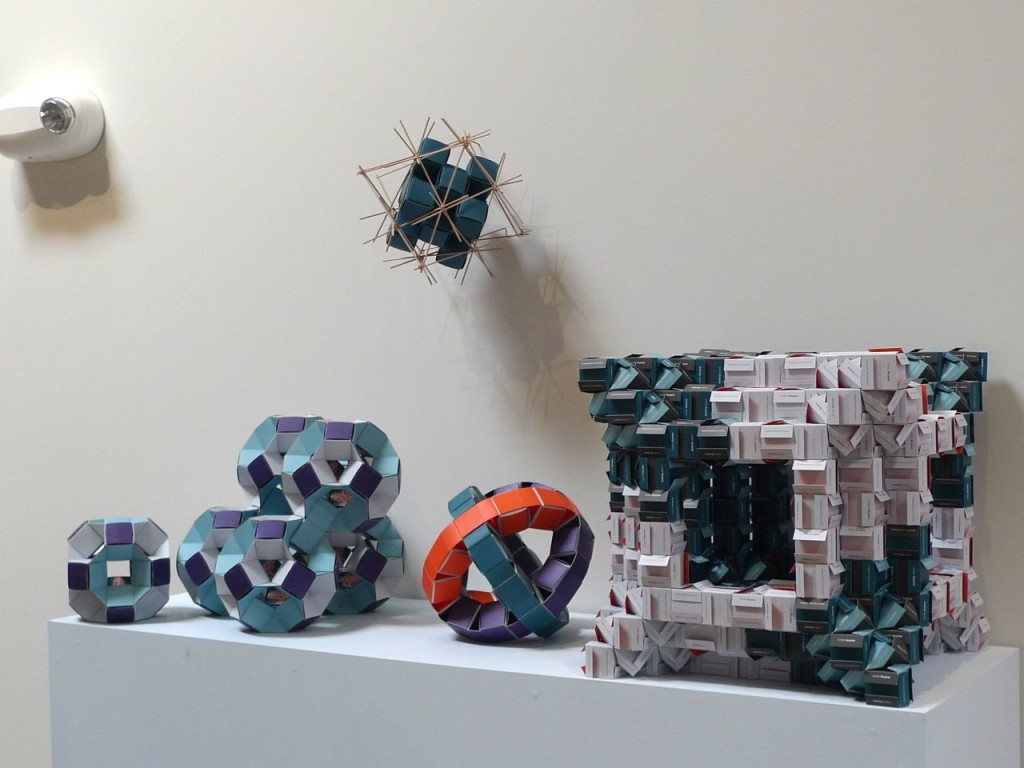
At right, Jake Dotson’s cubic lattice and, hanging above, his origami module embedded in a cubic lattice of bamboo sticks. This structure is a prelude to the many paper-and-stick things that Jake would develop during his Science + Art Residency at the Institute For Figuring in Fall 2013.
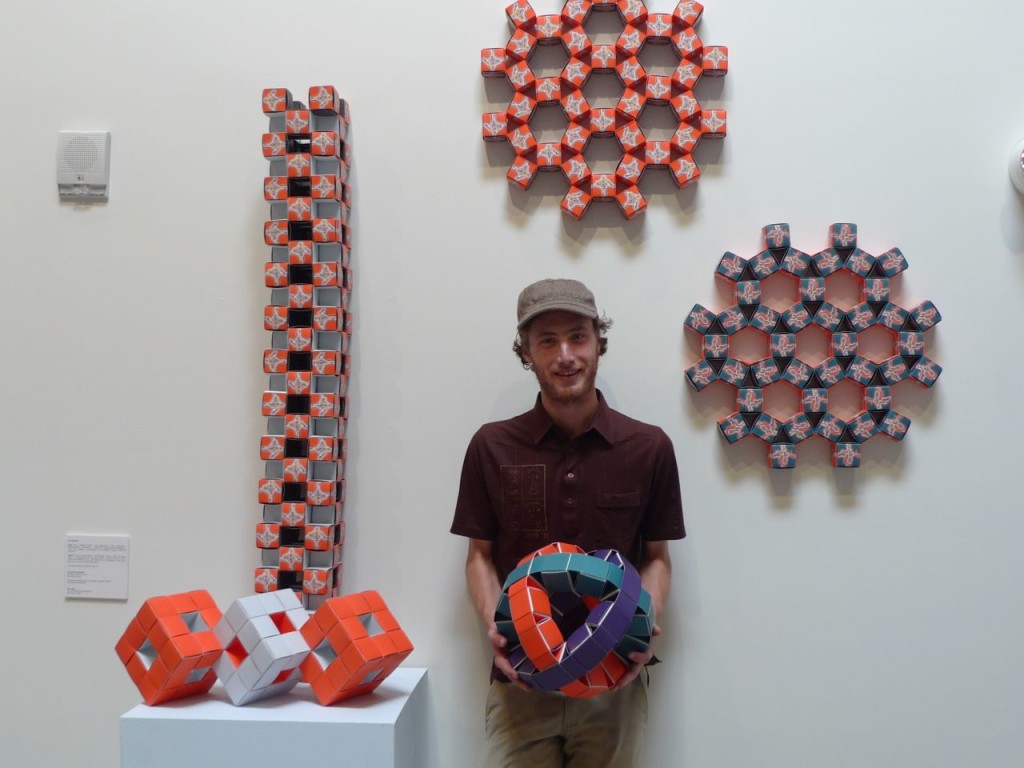
Jesse Dotson with his hexagonal tiling structures and his “armillary sphere”. At left is David Orozco’s tower and three linked Level One Menger Sponge fractals by Margaret Wertheim.
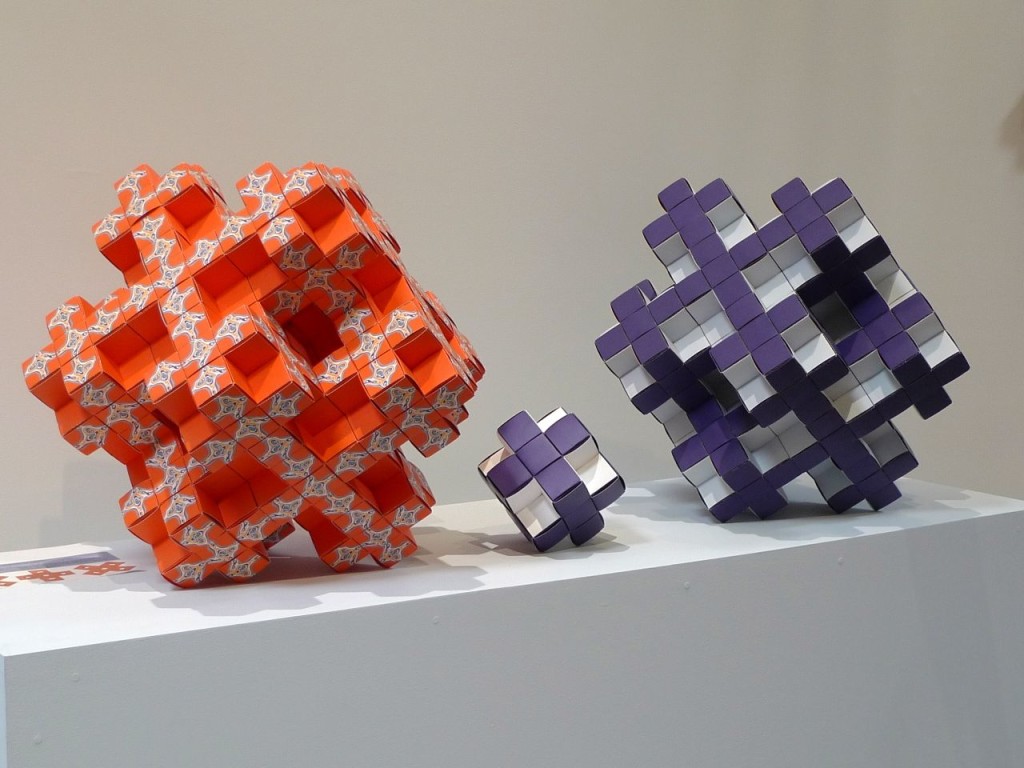
Close-up of two Level Two Mosely Snowflake fractals at the Google exhibition, showcasing the elegant business cards that were designed for the IFF’s Making Space project by Cindi Kusuda and Margaret Wertheim. Fractals folded by Christina Simons and Margaret Wertheim, from an original design by Dr. Jeannine Mosely.
